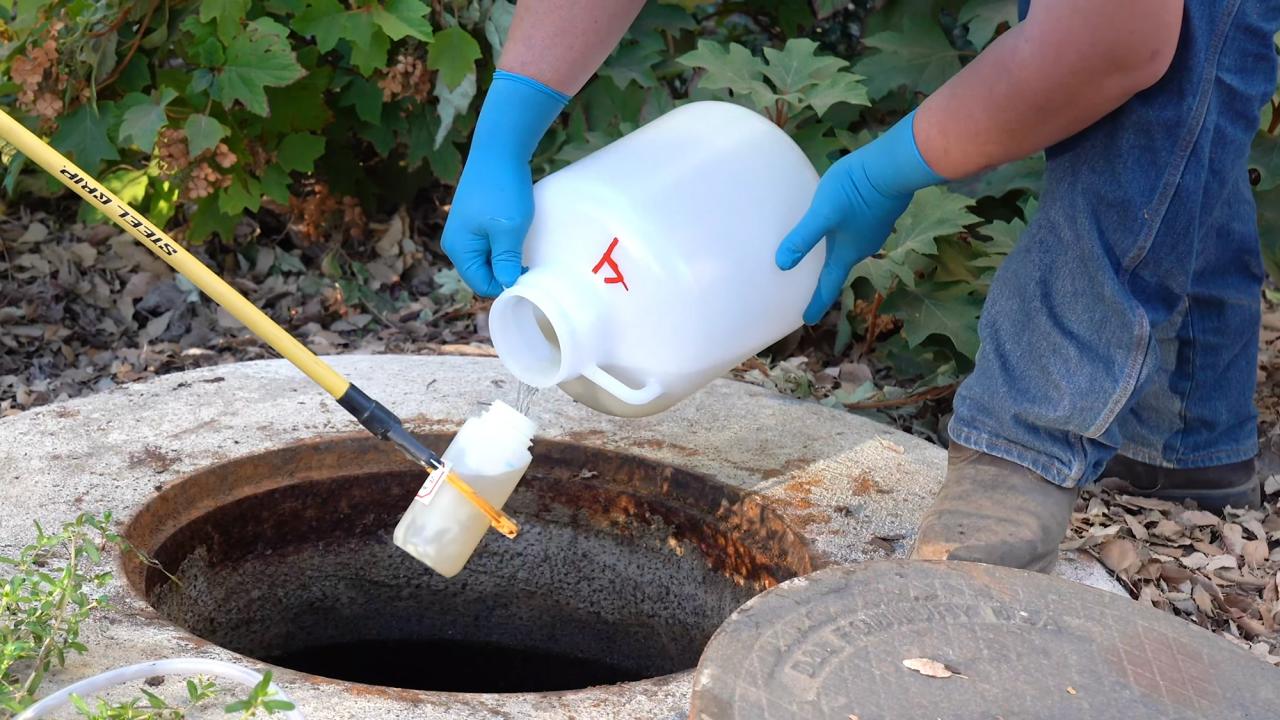How can we watch for flare-ups of COVID-19 as the pandemic continues but infection rates decrease? The answers could be in wastewater and in the air.
Read more
This story is a sidebar to the article "Healthy Davis Together: Could This Be the Future of Public Health in America?"
Heather Bischel, an assistant professor of civil and environmental engineering, and David Coil, a project scientist with the UC Davis Genome Center, co-lead an initiative with Healthy Davis Together, or HDT, to collect regular samples from wastewater on campus and around the city of Davis. They also ran a pilot program earlier this year to swab stand-alone HEPA air filters inside five elementary schools in Davis.
Testing and targeting
Individual COVID-19 testing of large groups of people on a regular basis is still largely impractical and expensive. Many people with COVID-19 shed the virus in their feces even before they develop symptoms, and the signature of that virus shows up in wastewater. Cities and universities around the country have set up testing of wastewater to track the virus.
“We can detect the RNA of the virus and measure the concentration,” Bischel said. “It’s intended to help target communications if there’s an uptick in one or more areas of the city.”
Bischel’s lab began testing samples from the UC Davis wastewater treatment plant in the summer of 2020, collaborating with Karen Shapiro, associate professor in the School of Veterinary Medicine, UC Davis Facilities Management and a team of other researchers. The results were initially mostly negative, with some positive results in August and September as cases surged locally.
When a sample is brought to Bischel’s lab, it is first heat-treated to inactivate viruses or other pathogens, then it is concentrated using a magnetic system. The actual test for SARS-CoV-2, the virus that causes COVID-19, is by PCR, essentially the same method as used at the Genome Center for testing saliva. Results are typically available within 24 hours.
Encouraged by this success, the campus ordered a dozen automatic samplers that could be rotated among 22 locations on campus. The first devices were installed in October 2020. The program has since expanded to include 42 locations on campus as of September 2021.
Wastewater testing expanding in Davis
Wastewater testing in the city of Davis, in collaboration with the city’s Department of Utilities and Operations, began in November 2020.
While it doesn’t identify individual cases, wastewater testing can show trends at the neighborhood level. That can show how well efforts to combat the pandemic are working and if some areas need more attention.
The HDT team is also working to test samples from wastewater treatment plants that might not have the staff or equipment to do the monitoring themselves, both elsewhere in Yolo County and in Merced and Stanislaus counties.
Air-filter monitoring in schools
Earlier this year, Coil oversaw an eight-week pilot program at multiple elementary schools in Davis to collect samples from air filters placed in classrooms and test them for the coronavirus. The data were specific enough to do some targeted outreach.
“One [school] was basically never positive, while the other had multiple classrooms — sometimes repeated classrooms” that tested positive, he said. “We knew we couldn’t track it down to, ‘This person was positive,’ but we could direct testing resources, vaccination information and other communications to the place where there’s a problem.”
Air-filter testing makes sense for locations such as daycares or special education schools, where mostly the same people are present every day and a vulnerable population could benefit from regular monitoring. It is less useful for locations such as offices with fewer people and less access by the public.
Also, air-filter monitoring is relatively easy to set up and could be done with viruses other than COVID-19.
